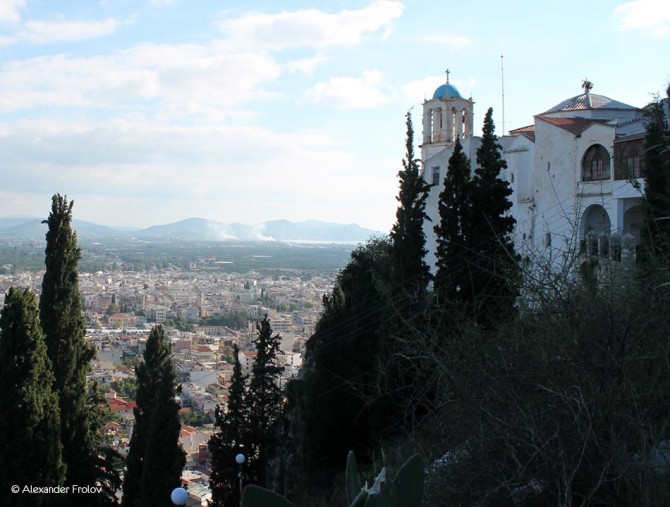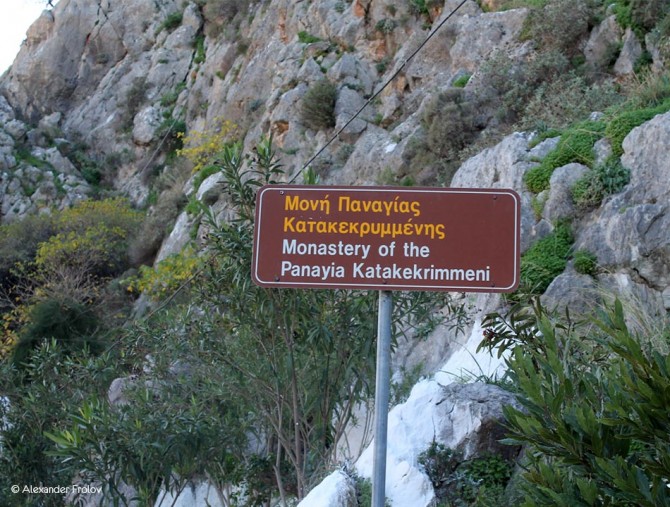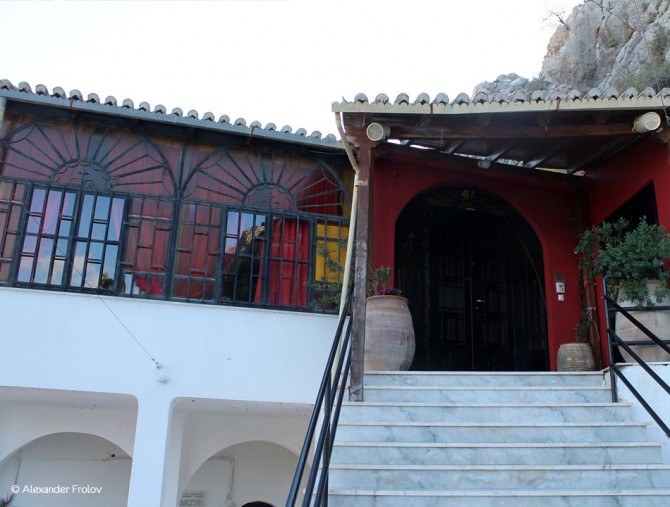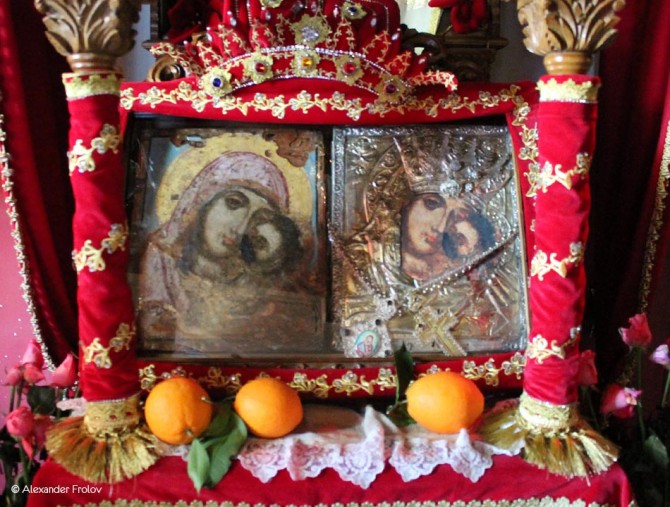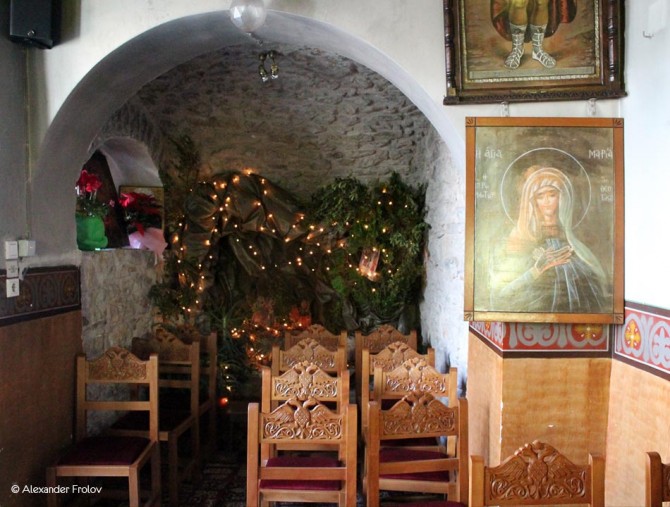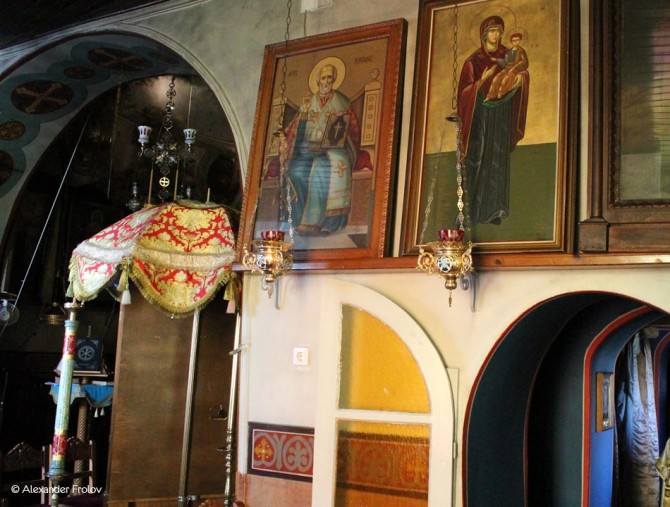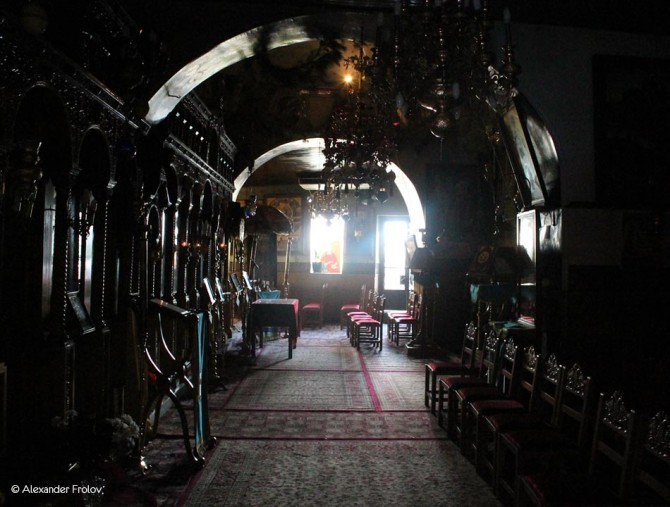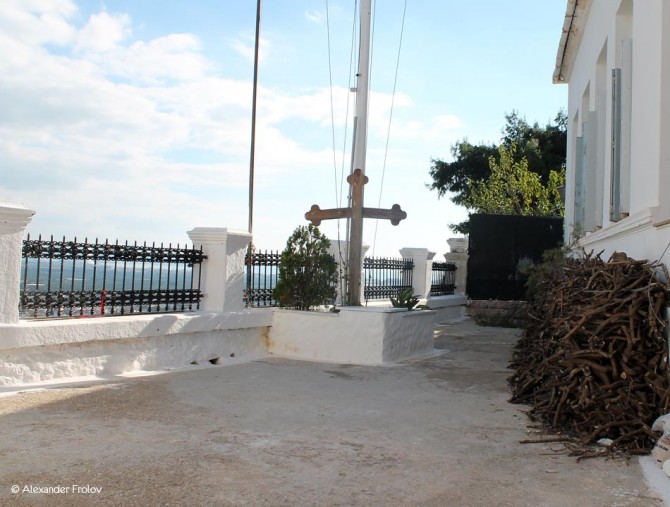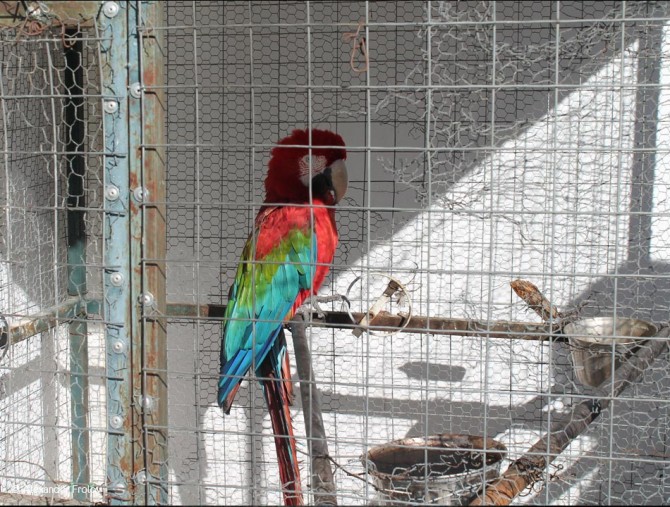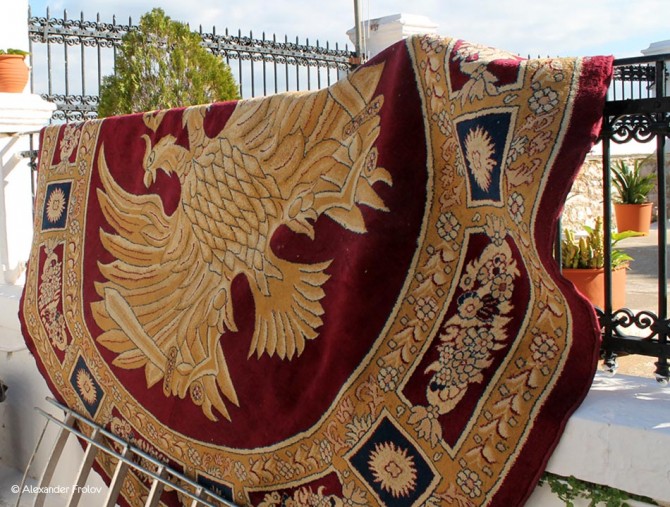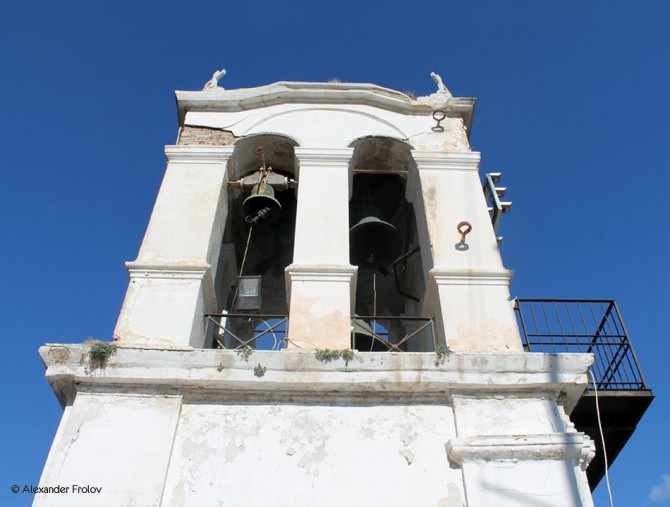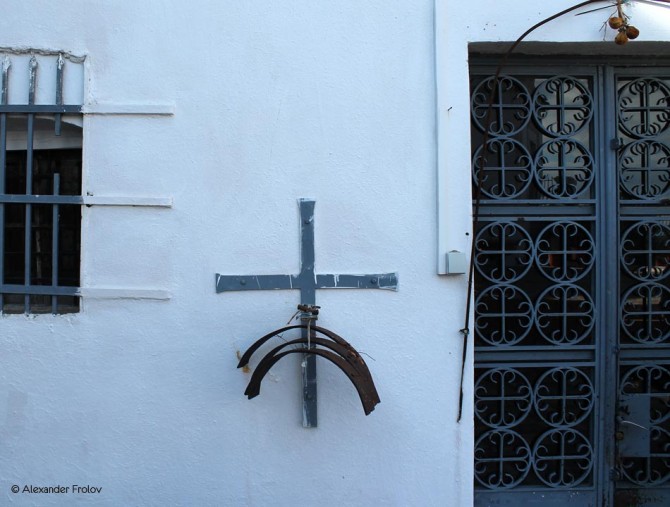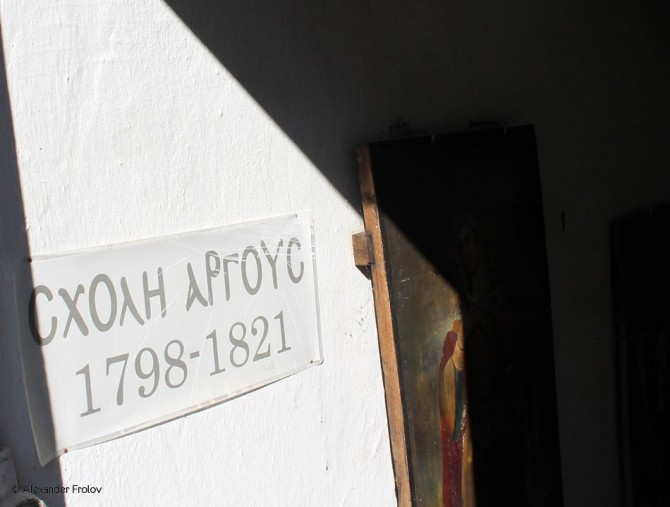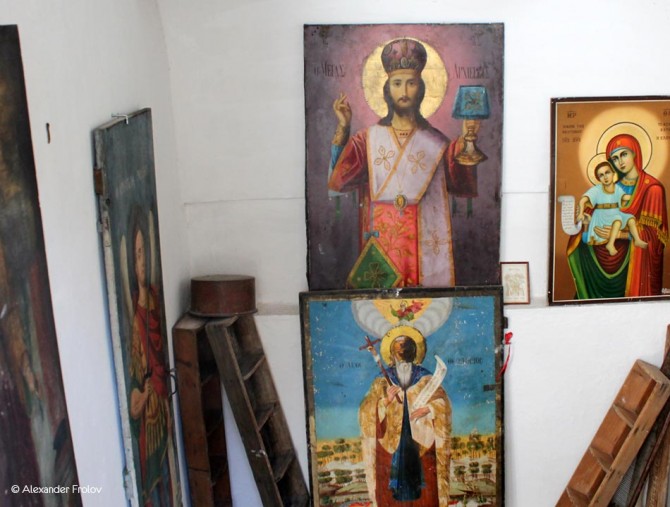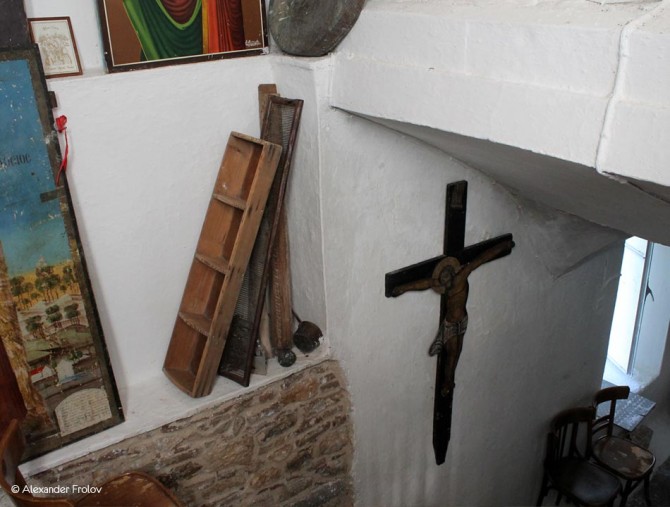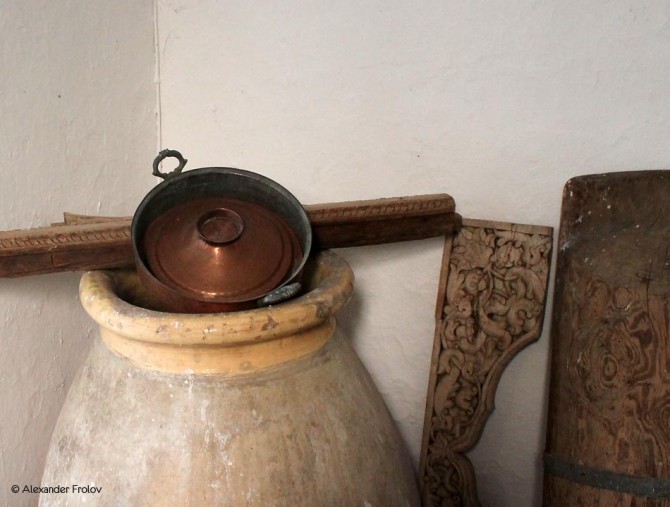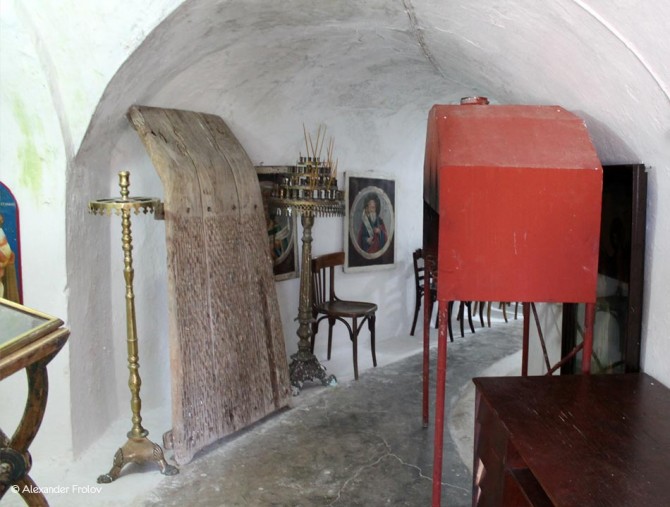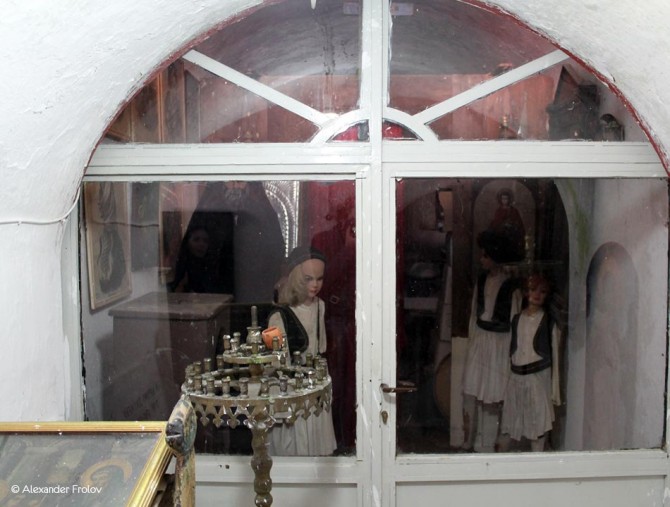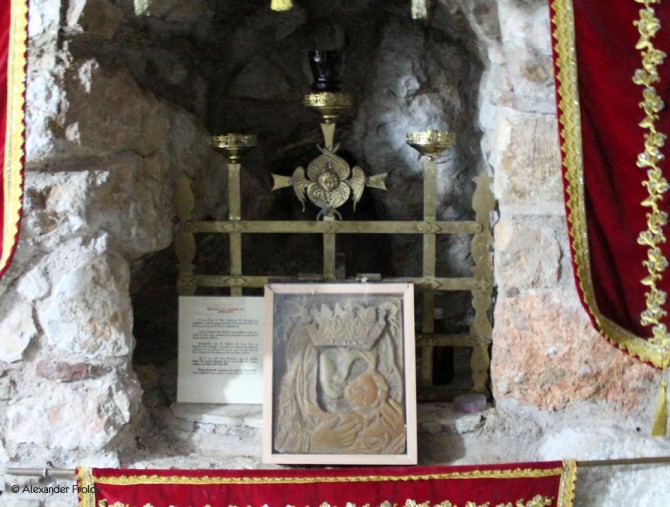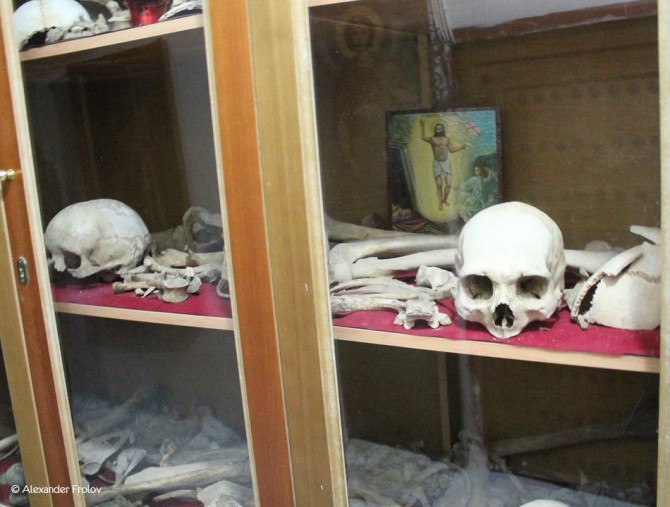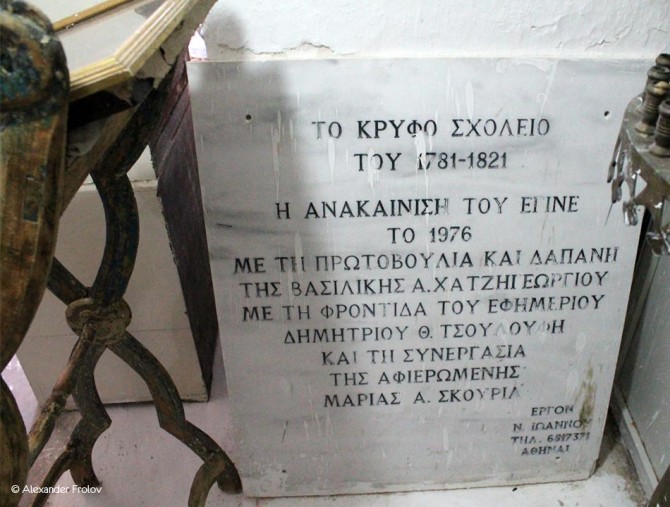Панагия Катакеримени
Название монастыря – Катакеримени дословно означает «хорошо скрытый». Оно произошло от иконы Богородицы, которая была спрятана в пещере скалы и впоследствии чудесным образом найдена. Говорят, что одному праведнику эта икона явилась во сне. Наяву же она была найдена благодаря удивительному свечению. Так или иначе – на месте иконы решено было построить храм, в котором ее можно увидеть. Другое название монастыря – Портокалусса (портокали по-гречески – апельсин), появилось благодаря обычаю забрасывать апельсинами молодоженов.
Монастырь играл ключевую роль во время революции. В 1798 году здесь размещалась так называемая «тайная школа» Аргоса. Только здесь по ночам дети могли учить греческий язык. Среди учеников школы был Патрон Германос III, знаменитый священник, благословивший 25 марта 1821 года в монастыре Агия Лавра национальное восстание против Османской империи. Также, после поражения греков в Ксирии 4 апреля 1821 года, в монастыре Катакримени укрывались от турок как бойцы ополчения, так и простые граждане.
Храм монастыря украшен множеством необыкновенных икон. Не менее удивительна и его планировка. Помимо уникальных икон тут можно увидеть множество других религиозных реликвий. Имеются здесь даже кости святых в специальных витринах. Одна из главных реликвий монастыря – это венецианское Евангелие 1776 года издания. Также интересны две иконы: Сретения Богородицы 1705 года и Панагия Гликофилусса (это слово означает – сладкий поцелуй).
В 1865 году монастырская деятельность тут прекратилась и Панагия Катакеримени стал обычным приходским храмом и пробыл в таком качестве практически до наших дней. Пару лет назад здесь появились два монаха-близнеца, вернувших ему свое назначение.
Как добраться до монастыря Панагия Катакримени:
- на машине из Афин (127 км) по трассе Олимпия Одос А8/Е94
- на машине из Нафплиона (11,8 км) по трассе Навплион-Аргос
- на машине из Коринфа (48,4 км) по трассе Коринф-Триполи А7/Е65 и трассе Коринф-Аргос
- на автобусе из Афин с автовокзала Кифисью. Тел. автовокзала в Аргосе: +30 27510 69 323, тел. автовокзала в Нафплионе: +30 27520 27 323
Телефон монастыря: +3027510 68 709 & 6948 27 80 94
Фото и текст: Александр Фролов
Monastery of Panagia Katakekrimmeni
This beautiful historical monastery is perched on a rocky hill, at the northeast side of the Castle of Argos, overseeing the city. In the antiquity at this spot there was an ancient temple dedicated to Hera. The monastery was built around 1715 and if its walls could speak, they would narrate many interesting stories.
Its name to begin with, Panagia Katakekrimmeni (katakekrimmeni in English means something like “Very Well Hidden”), derives from the wonderful icon of Virgin Mary, which was hidden in the cave of the rock (over which the church was later built) and was found in a miraculous way. According to the tradition, either a powerful sparkle in the middle of the night leaded the Christians to this spot or a faithful man saw a relative dream and leaded the priests there. In any case, after they found the icon, they decided to build there a church. Today, the miraculous icon is placed in a wooden carved canopy inside the church and it is considered as an excellent sample of hagiography. The monastery is also known as Portokalousa (something like “Lady of oranges”) due to the old local custom according to which the villagers were throwing oranges to each other and especially to the newlywed couples on the day of the Presentation of Virgin Mary (November 21).
The monastery played a key role in the region during the pre-revolutionary and the revolutionary period. In 1798 it housed the first school of Argos. Among the pupils there was the notorious Germanos III of Old Patras, the bishop who blessed a Greek flag at the Monastery of Agia Lavra and proclaimed the national uprising against the Ottoman Empire, on March 25, 1821. The school kept operating and after 1821. Also, after the defeat of the Greeks in Xiria (April 4,1821), civilians and several combatants had taken refuge in the monastery in order to avoid the wrath of the Turks. One year later, in 1822, the first Greek Mint was founded there, but it never worked.
The church of the monastery is adorned with amazing icons and you will be impressed by the peculiar room layout. Under the church, there is the room where the school operated. Rare icons, remarkable religious relics, bones of saints and a small showcase with waxworks of the school pupils are mixed sweetly in a room full of historical energy.
Among the significant religious relics that are hosted in the premises of the monastery the ones that stand out are a Gospel of Venezian edition (1776) and two icons, one of the Presentation of Virgin Mary (1705) and one of Panagia Glykofilousa (Virgin Mary, the Sweetkisser).
In 1856, the Panagia Katekekrimmeni had stopped operating as monastery and had started operating as parish church. The last few years, however, two twin brothers monks took over the monastery, giving it back its previous allure.
Monastery of Panagia Katakekrimmeni, Argos, tel.: +30 27510 68 709 & 6948 27 80 94.
How to get to Argos: By car from Athens (distance 127 km) via Olimpia Odos/A8/E94, from Nafplio (distance 11,8 km) via National Highway Argos-Nafplio, from Corinth (distance 48,4 km) via A/D Corinth-Tripoli/A7/E65 and National Highway Corinth-Argos. By bus from Athens and many Greek cities. Kifissou Bus Station (100 Kifissou street, Athens), tel.: +30 210 51 34 588. Argos Bus Station, tel.: +30 27510 69 323. Nafplio Bus Station, tel.: +30 27520 27 323.
Τext: Marilou Pantazi

